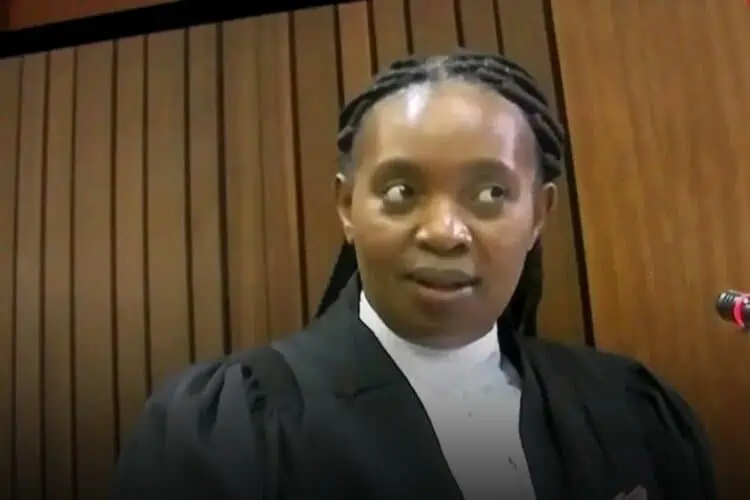Advocate Zandile Mshololo, part of the defence counsel, has strategically questioned the forensic credibility of the evidence presented by the state witness, Lieutenant-Colonel Thobeka Mhlahlo.
Senzo Meyiwa trial: Advocate Zandile Mshololo pokes holes in forensic credibility
Mshololo’s line of questioning aims to create reasonable doubt by highlighting potential flaws in the investigation and the possibility of evidence tampering.
Mhlahlo, a crime scene forensics expert, testified that no fingerprints were found on the kitchen door of the Vosloorus house where Senzo Meyiwa was fatally shot.
Under cross-examination by Advocate Mshololo, Mhlahlo admitted that a bullet projectile was never swabbed for DNA profiling, raising concerns about the thoroughness of the investigation.
In addition, Advocate Mshololo questioned Mhlahlo about the potential for evidence tampering, specifically focusing on the presence of police officer Themba Khumalo, who possessed house keys and remained on the scene.
Mshololo implied that Khumalo’s presence with the keys could have provided an opportunity for tampering. Mhlahlo refrained from commenting on the possibility, indicating the complexity of the situation.
Mshololo highlighted contradictory statements in the testimony. The defence presented the assertion that a bullet found at the Vosloorus scene could have been planted.
Mhlahlo’s forensics colleague, Thabo Mosia, previously testified that he found no bullet in the specified area. Mhlahlo, however, stated that she discovered a bullet behind glass jars and the door.
Mshololo posed questions regarding the bullet’s origin and the potential for tampering after Mosia’s inspection.
The defence advocate reminded the court of the testimony provided by Zandile Gumede-Khumalo, a state witness and singer-songwriter sister of Kelly.
Gumede-Khumalo testified that the area where the bullet was found was clear and visible.
Mshololo suggested that the bullet’s discovery after Mosia’s inspection might indicate tampering by individuals moving in and out of the scene, potentially casting doubt on the integrity of the evidence collection process.






